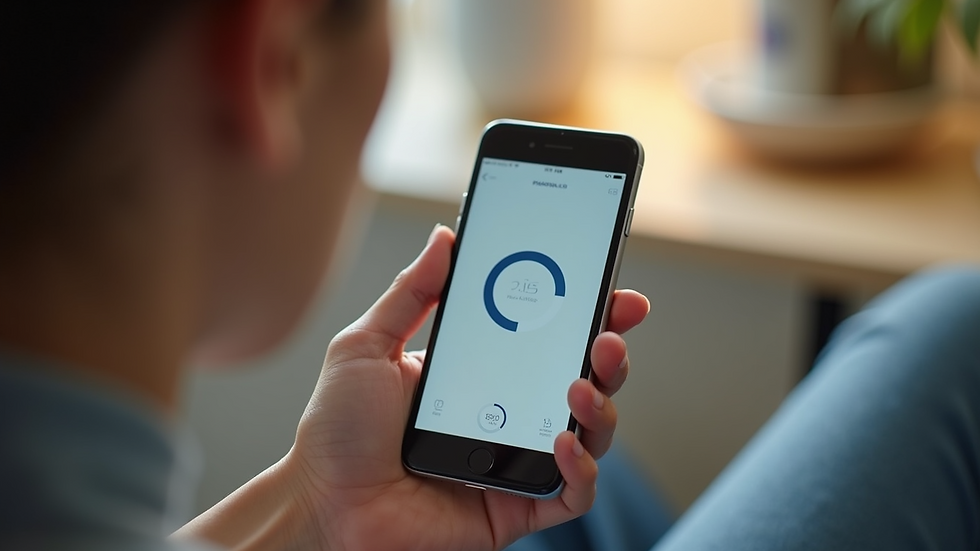Discover the Benefits of Digital Hearing Aids
- Hearing Solutions

- Sep 6
- 4 min read
Hearing loss can affect anyone at any age, making everyday communication challenging. Fortunately, advances in technology have transformed hearing aids into sophisticated devices that offer much more than just volume amplification. Modern hearing aids provide a range of benefits that improve sound quality, comfort, and overall quality of life. This article explores the many advantages of these devices and how they can help you or your loved ones reconnect with the world of sound.
Exploring the Modern Hearing Aid Benefits
Modern hearing aids are designed with cutting-edge technology to address various hearing needs. Unlike older analog models, these devices use digital processing to deliver clearer, more natural sound. Here are some key benefits that make modern hearing aids stand out:
Improved Sound Clarity: Digital processing allows hearing aids to distinguish speech from background noise. This means conversations in noisy environments become easier to follow.
Customizable Settings: Many devices can be programmed to suit individual hearing profiles. This personalization ensures optimal performance for different types of hearing loss.
Wireless Connectivity: Modern hearing aids often connect to smartphones, TVs, and other devices via Bluetooth. This feature enables direct streaming of calls, music, and media.
Comfort and Discretion: Advances in design have made hearing aids smaller and more comfortable to wear. Some models are nearly invisible when worn.
Longer Battery Life: Rechargeable batteries and energy-efficient components reduce the need for frequent replacements.
These benefits combine to create a hearing experience that is both effective and user-friendly. Whether you are new to hearing aids or considering an upgrade, understanding these advantages can help you make an informed decision.

Modern hearing aids are compact and designed for comfort.
How Technology Enhances Hearing Aid Performance
The core of modern hearing aid benefits lies in digital technology. Digital hearing aids convert sound waves into digital signals, which are then processed by microchips. This process allows for precise adjustments and enhancements that analog devices cannot achieve.
Some technological features include:
Noise Reduction Algorithms
These algorithms reduce unwanted background noise, making it easier to focus on speech. For example, in a busy restaurant, the hearing aid can suppress clattering dishes and chatter while amplifying the person speaking to you.
Directional Microphones
These microphones focus on sounds coming from a specific direction, usually in front of the wearer. This helps in situations where you want to hear someone talking directly to you without distractions from other directions.
Feedback Cancellation
Feedback or whistling sounds are common in older hearing aids. Modern devices use feedback cancellation technology to eliminate these annoying noises.
Automatic Environment Adaptation
Some hearing aids automatically adjust their settings based on the environment. Whether you are outdoors, in a quiet room, or at a concert, the device optimizes sound accordingly.
Remote Control and App Integration
Many hearing aids come with companion smartphone apps. These apps allow users to adjust volume, change programs, and even track battery life discreetly.
By leveraging these technologies, modern hearing aids provide a seamless and natural listening experience that adapts to your lifestyle.

Smartphone apps allow easy control of hearing aid features.
What is the average cost of a digital hearing aid?
Understanding the cost of hearing aids is important when considering an investment in better hearing. The price of digital hearing aids can vary widely depending on features, brand, and provider. On average, a single digital hearing aid can range from $1,000 to $3,500.
Factors influencing cost include:
Technology Level: Basic models with fewer features are less expensive, while premium models with advanced noise reduction and connectivity cost more.
Customization and Fitting: Professional fitting and programming by an audiologist add to the overall expense but ensure the device works optimally.
Warranty and Support: Some packages include extended warranties, repairs, and follow-up services.
Insurance Coverage: Check if your insurance plan covers part of the cost or if there are assistance programs available.
While the upfront cost may seem high, consider the long-term benefits of improved communication, safety, and quality of life. Many users find that the investment pays off in daily convenience and social engagement.
For more detailed information on specific models and pricing, you can explore digital hearing aids.

Hearing aid prices vary based on features and technology.
Practical Tips for Choosing the Right Hearing Aid
Selecting the right hearing aid involves more than just price and technology. Here are some practical tips to help you make the best choice:
Get a Professional Hearing Test
An audiologist can assess your hearing loss and recommend suitable devices.
Consider Your Lifestyle
If you are active or frequently in noisy environments, look for hearing aids with strong noise reduction and durability.
Try Before You Buy
Many providers offer trial periods. Use this time to test comfort, sound quality, and ease of use.
Check for Connectivity Options
If you use smartphones or other devices often, choose hearing aids with Bluetooth or wireless streaming.
Think About Maintenance
Rechargeable batteries reduce hassle, but some users prefer replaceable batteries for convenience.
Ask About Support Services
Ongoing support, adjustments, and repairs are important for long-term satisfaction.
By considering these factors, you can find a hearing aid that fits your needs and enhances your hearing experience.
Embracing Better Hearing for a Fuller Life
Hearing well is essential for communication, safety, and enjoying everyday moments. Modern hearing aids offer a powerful solution to hearing loss, combining advanced technology with comfort and convenience. Whether you are experiencing mild or severe hearing loss, these devices can help you reconnect with the sounds you love.
If you or someone you know is struggling with hearing difficulties, exploring the benefits of modern hearing aids is a step toward improved quality of life. With options tailored to different needs and budgets, better hearing is more accessible than ever.
Take the first step today by consulting a hearing professional and discovering how technology can transform your hearing experience. The world of sound awaits you.








